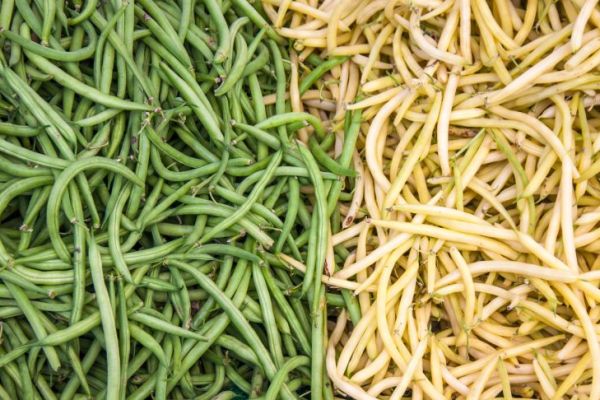Hydroponic Beans Farming – A Complete Guide
Hydroponic Beans Farming – A Complete Guide

Are you someone who wants to grow Beans Hydroponically and is waiting for a guide? Then you’re at the right place. This article will walk you through the best techniques followed in Hydroponic farming. Stick around to know the hacks that work and benefit from it. We will provide you with a step-by-step guide on Hydroponic Beans farming. So let’s dive into the topics.
Table of Contents
Introduction to Hydroponic Beans Farming
Popular types of Beans cultivated
Advantages of Hydroponic Beans Farming
Selecting a site for Growing Beans Hydroponically
Seed Germination of Beans in a hydroponic system
Media required for hydroponic beans farming
Hydroponic system for Beans Farming
Lighting requirement for hydroponic beans
Nutrients Solution
Harvesting of hydroponic beans
Introduction to Hydroponic Beans Farming
Hydroponic farming is a process of growing plants in nutrient-rich water solution instead of growing it in soil. Hydroponic farming gives higher yield and it is easy to grow indoors. However, you can grow it both indoors and outdoors as well.
Beans are one of the most loved vegetables and are used worldwide in different dishes for their flavor and for the rich nutrients it carries. They are a good source of fiber and Vitamin-B. Now, we need not limit the cultivation of fresh Beans in the spring or the fall and grow them year-round with Hydroponic Beans Farming.
Growing Beans plants is loved by most farmers and gardeners as it is easy to grow. It is also more productive and at the same time requires low maintenance if grown hydroponically. If given proper care and nutrients, the Beans plant will give you healthy, green, and tall vegetables in return.
Popular types of Beans cultivated
Beans are classified into two types based on their growing habits, namely determinate-type growth and indeterminate-type growth.
Determinate types are beans that grow as low as a bush, they are more appropriate for small spaces. Indeterminate types are climbers that include the majority types of beans, trellis should be provided for these kinds of beans for them to grow vertically and yield more.
When it comes to selecting beans for a hydroponic garden, both types do well.
Advantages of Hydroponic Beans Farming
Hydroponic Beans farming has many advantages compared to traditional beans farming. Soil-borne diseases can be avoided as we don’t use soil for planting bean plants.
Other advantages are;
- Faster and more yield due to high oxygen level in the nutrient solution.
- You can grow bean plants year-round.
- As water is circulated in the hydroponic method, plants only use 10% of the water used in the traditional method.
- You can check the plants’ requirements for nutrients before planting and mix it with water accordingly.
- Hydroponic beans can be easily grown at home regardless of their size and location.
Selecting a site for Growing Beans Hydroponically
As we saw earlier there are two types of beans. The climber beans require support to grow vertically, you can use poles, ropes, or trellis to support their growth. So you have to select a place where you can place the hydroponic system with the support.
Make sure the place you choose gets good sunlight, this will make your beans plant healthy and result in a higher yield.
Seed Germination in Hydroponic system
Generally, the seeds are sown 1 inch deep, however, it varies depending on the type of seed, quality, and other factors. The most favorable temperature for seeds until germination is 16℃ – 18℃.
Germination is a process where the plant breaks out of the seed coat to become seedlings. Hydroponic Beans are propagated by using their seeds. Usually, the beans germinate very fast, it takes about a week or a couple of weeks after the seeds are sown.
After the seeds have germinated and when you see that the plants have developed 2 to 3 real leaves, transplant them into a hydroponic system with utmost care. Make sure you place the climber beans 4-6 inches apart to avoid overcrowding. Bush beans can be planted 2-4 inches apart.
Media required for hydroponic beans farming
Blend of Perlite and Vermiculite – Perlite is an inorganic medium manufactured from volcanic glass that has great aeration. Vermiculite is a highly absorbent and porous medium that has a neutral pH. The blend of both works best for hydroponic beans.
Expanded clay pebbles- It is one of the most versatile mediums to grow as they have the ability to retain a high level of water, oxygen, and nutrients.
Hydroponic system for Beans Farming
There are two main systems that are recommended for commercial hydroponic bean farming. They are the ebb-and-flow system and NFT (Nutrient flow technique) system. For home gardeners, the dutch bucket system with loose grow media works well.
Lighting requirement for hydroponic beans
Your bean plants love bright sunlight, so it is better to choose a site that gets direct sunlight or you can arrange lights for your plants. The more your plant gets sunlight the better the yield.
Nutrients solution
Hydroponically grown bean plants require a relatively small amount of nutrients. You can either formulate the solution on your own or you can buy a pre-mixed, ready-to-use nutrient formula.
Carefully read the instructions given on the packet and follow them accordingly. Change the solution periodically to prevent plant damage via salt buildup.
Harvesting of hydroponic beans
Finally, it’s harvest time! Hydroponically grown beans harvest faster than those grown traditionally. Green beans should be harvested young before they mature and lose their crisp and freshness.
Make sure you don’t disturb other plants during the harvesting process. You can also place new plants in the hydroponic system every 2 weeks for continual harvest.
Get started with your hydroponic beans farming and yield fresh and healthy bean vegetables.
Posted
1 year ago
No comments yet! Why don't you be the first?








Add a comment